Pimpinella anisum
Fam. Apiaceae (Umbelliferae)
Ing. Anise
Fr. Anis
Ted Anis
Sp. Anis
Description

The root is taproot. The leaves, not very numerous and alternate, have a pronounced heterophylly: those located near the base are usually roundish, toothed, lobed and equipped with a long petiole (which forms a small sheath towards the base); the intermediate ones are trifoliate, toothed; the caulinary ones are finely incised, feathery and with a shorter petiole. The flowers of the anise are small, yellowish-white and arranged in umbrella-shaped inflorescences with 8-12 rays; the calyx is reduced to 5 teeth, the corolla, actinomorphic, has five petals; stamens 5 and bilocular inferior ovary. The flowering period is the height of summer. The fruit is a schizocarp, formed by two ovoid achenes covered with stiff bristly hairs and equipped with numerous oil sacs. Anise has a sweet and spicy flavor. The aroma of the plant is pleasant.
Areal
Green anise is a plant native to the East, it is cultivated in most of the European territory, in Asia Minor, India, North Africa, the territories of the former Soviet Union and Mexico. verde grows spontaneously in Sicily and crops are mostly concentrated in Emilia and Tuscany.
The anise prefers light and fertile soils, well worked and well drained, while it fears clayey or humid ones. It is also important to have a sunny and sheltered exposure from the wind.
Culture
The sowing of the anise is carried out, on well-prepared soil, in March-April; the species, in fact, fears late frosts and needs at least 120 days of environmental conditions in which frost does not occur. The anise seed takes about 30 days to germinate, but the vegetative development continues very quickly after the release of the first leaves. Other characteristics typical of the seeds of this plant are the rapid loss of germination and the greater germination energy of larger seeds; therefore it is necessary that the seeds are recent and come from the central umbrella of the plant.
In the case of an "excessive density of the crop, when the plants have reached a" height of about 10 cm, it is necessary to intervene with thinning; transplants should be avoided because they are not well tolerated; then it will be enough to weed the soil to avoid the growth of weeds, and irrigate it if necessary.
The anise takes advantage of the richness of calcium in the soil. When sowing, the contribution of localized phosphorus and potassium is not recommended, as the crop seems to be negatively affected. A final aspect of the cultivation technique concerns the possibility of associating our herbaceous plant with biennial plants, such as the "caraway". The two species are sown, in alternate rows, at the same time in spring: the first year will produce anise, the second that of caraway.
Adversity
Among the adversities of the crop, in addition to adverse meteorological phenomena, such as frosts, a prominent place is occupied by fungal parasites that damage the leaves and / or attack the fruits. Once in storage the green anise can be damaged by a beetle, but these parasites do not cause damage that requires protection.
Drug
These are the fruits, which ripen between August and September, according to the place of cultivation and the seasonal trend; they must be harvested by cutting off the stems of the plants at the base when the ripening of the seeds is not yet complete, that is when the umbels are taking on a gray-greenish color. and their seeds are still hard.The umbrellas must then be exposed to the sun for complete ripeness and for the seeds to come out.The seeds are kept in well-sealed boxes after drying them in the sun.
The essential oil mainly contained in the fruit is made up of about 80% of anethole; it is colorless or has slight yellowish tinges. Extraction takes place by steam distillation. In addition to the essential oil, there are also proteins, sugars, fatty acids, starch, caffeic and chlorogenic acids.
The anise fruits on the market can be classified as follows:
Anise from Italy, Spain and Malta; they are the best with medium-sized and ashy-green fruits; vAnise d "Albi or French with fruits of medium size, whitish-green in color and with a very pronounced aroma;
Tunisian anise with green fruits with a sweeter flavor;
Russian anise with small, blackish fruits, little sought after
Uses
In dietetics: anise is used to flavor many liqueurs; its seeds, whole or chopped, add flavor to bread, focaccia and sweets. In phytotherapy it is a regulator of digestion, antispasmodic and carminative, it is also sweat and expectorant. to sedative properties, it has other, less known but widely tested properties such as that of increasing milk flow while exerting its sedative action on the infant; or that of anticipating a delayed menstrual cycle. Chewing lightly aniseed at the end of a meal. toasted serves as a digestive and perfumes the breath. In popular medicine it was considered aphrodisiac.
Select plant Fir Acacia Acerola Sorrel Yarrow Yarrow Yarrow Aconito Adatoda Garlic Agnocasto Agrimonia Alchemilla Alkekengi Aloe Altea Witch Hazel Ammi or Visnaga Pineapple Andrographis Anemone Pulsatilla Angelica Anise Star Anise Japanese Star Anise Bitter Orange Bitter Areca Arnica Harpagophytum Arpagophyte Artemisia Asteragus Basil Asparagus Asparagus Peruvian Asparagus Asparagus Asparagus Hawthorn Boldo Borage Shepherd's Purse Boswellia Bucco Butea superba Cocoa Coffee Cajeput Calamus Calamus Marigold Camedrio Chamomile Roman Chamomile Camphor Cinnamon Ceylon Maidenhair Capuchin Artichoke Cardamom Cardiac Thistle Asian Thistle Carvi Cascara Cassia Catecu Catha Cabbage Celandine Chicory Centaurea Cinnamon Cypress Celandine Chives Cypress Coca Cola Colchico Combreto Condurango Comfrey Coriander Cranberry Barberry American Chrysanthemum Cumin Turmeric Damiana Digital Dioscorea Drosera Dulcamara Dunalilella Echinacea Eder a Ephedra Elenio Eleutherococcus Helichrysum Evening primrose Horsetail Alfalfa Erica Euphrasia Erisimo Escolzia Eucalyptus Farfara Farfaraccio Calabar bean Fenugreek Fennel Phytolacca Frangola Ash Fumaria Japanese Mushrooms Galega Ganoderma lucidum Garcinia Cambogia Mulberry Gentian Broom Ginkgo Ginkgo Guipana Guipana Gynestra Ginkgo Hibelia Gymnasium Hibiscus Guarulp St. John's Wort Horse Chestnut Ispaghul Hyssop Jaborandi Kava kava Konjac Laminaria Cherry Laurel Lavender Lemongrass Lespedeza Lovage Icelandic Lichen Lemon Flax Lippia Licorice Lobelia Hops Maca Marjoram Maize Mallow Manna Marrubio Marrubio d "water Matè Melaleuca Meliloto American Lemon balm Myrtle Myrama Walnut Nutmeg Walnut vomica Olive tree Meadowsweet Ononide Opuntia Oregano Orthosiphon Nettle Poppy Papaya Parietaria Feverfew Passiflora Chilli Perilla Periwinkle Phyllanthus Plantain Picrorhiza Pilosella Pino Pisci dia Podofillo Polygala Grapefruit Parsley Psyllium Pueraria mirifica Butcher's broom Pygeum Quassia Oak Rhubarb Ratania Rauwolfia currant Castor bean Rhodiola Rosehip Rosemary Rue Willow Sarsaparilla Sage Elderberry Sassafras Sedum Ergot Senna Serenoa Repens Soybean Solidago Tansy Taraxus Tamarind Tamarind Tamarind Tamarind Tamarindo Ursina Valerian Vanilla Mullein Verbena Veronica Viburnum Vinca Pansy Mistletoe Vine Withania Yohimbe Saffron Ginger Pumpkin Select disease Juvenile Acne Rosacea Tinnitus Tinnitus Aerophagia Tendon Affections Afonia Aphthae Algias Functional Halitosis Breastfeeding Allergy Anemia Anguish Anxiety Arteriosclerosis Asthrosis Asthrosis Arthritis Arthritis Men Sex Woman Blepharitis and Conjunctivitis Eye bags Bronchitis Gallstones Kidney stones Salivary stones Baldness Androgenetic Candida Fragile hair Caries Headache Cellulitis Motion sickness Cystitis C limaterio Cholecystopathy High cholesterol Ulcerative colitis Colonoscopy Contusions Hematoma Convalescence Couperose Depression Dermatitis Diaper dermatitis Diabetes Diarrhea Erectile dysfunction Dyslipidemia Dysmenorrhea Dyspepsia Disturbances of vision Hemorrhoids Epistaxis Herethism Heart disease Fever Fibromyalgia Gastro-intestinal disease Flatulence Hypertension Fibromyalgia Gastrointomnia Jaundice Laryngitis Renal lithiasis Toothache Sore throat Thinness Menopause Meteorism Mononucleosis Alzheimer's disease Crohn's disease Nausea Vomiting Obesity Dark circles Onychomycosis Osteoporosis Dry skin Periarthritis Piorea Low pressure Prostatitis Psoriasis Colds Breast fissures Anal fissures Gastro-nasal rhinitis Senescence Premenstrual Syndrome Sinusitis Quit smoking Overweight Fatty liver Constipation Stomatitis Stress Cough Triglycerides high Ulcer Burns Nails Brittle flashes Heat Warts Dizziness Properties herbal Tanning Abortive adaptogenic Aphrodisiac bittering analgesic anesthetic anorectics analgesic antacid anti-allergic anti-asthmatic Antibiotic catarrh Anticellulitiche anticonvulsant Antidiaforetiche antidiarrheal edematous anthelmintic antiemetic Antiemorroidarie antiphlogistic Antiidrotiche Antinevrotiche Antioxidants antipyretic antirheumatic antiscorbutic Antiseptic antispasmodic anti-uric Aperitive Flavoring Astringent Balsamic Bechiche Capillarotrope Cardiotonic Carminative Cathartic Caustics Healing Cholagogues Choleretic Dyes Decongestants Deodorants Purifying Diaphoretic Cleansers Disinfectants Detoxifiers Thirst quenching Diuretics Exciting Emetics Emmenagogues Emollients Hemostatic Energies Hepatoprotectors Expectorants Eupepticus Moisturisers Galactosensitizers lanti Hypertensive Hypnotic Hypoglycemic Hypotensive Irritants Laxatives Soothing Narcotic Nerves Nutrients Odontalgic Pectoral Purgative Revulsive Remineralizing Refreshing Rubefacient Scialagoghe Sedative Soporifugas Sneezing Stomachic Stomatics Narcotic Vascular Tightenitis

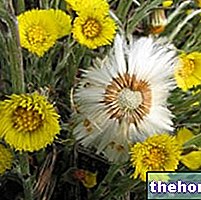
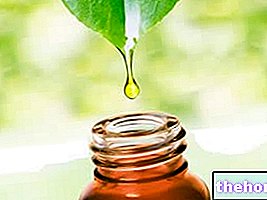
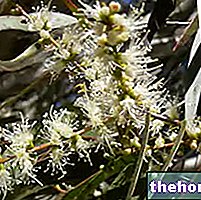

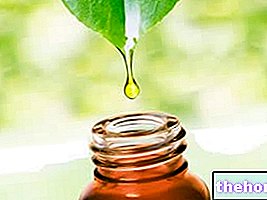
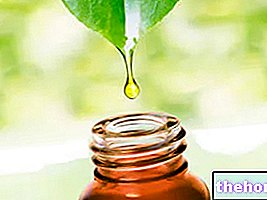
















-nelle-carni-di-maiale.jpg)




